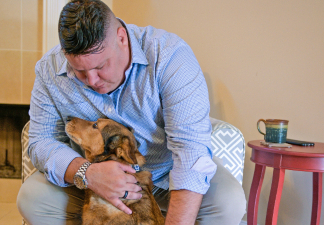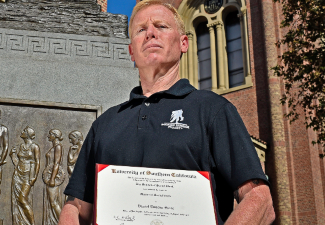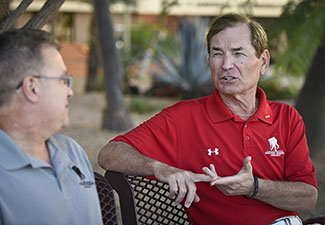Never Quit Fighting; Never Hesitate to Ask for Help with PTSD
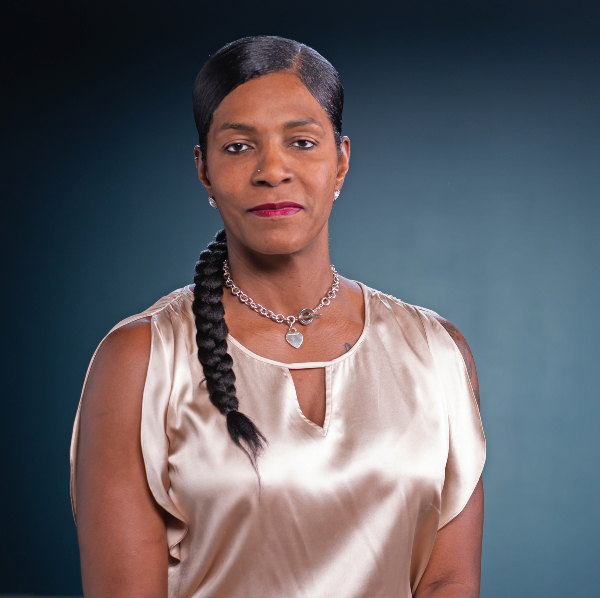
By Tonya Oxendine
As a Black woman soldier, I had to make myself the picture of perfection. There was no room for error in the military. I had to hit the ground running flawlessly every single time.
As a Black woman in a senior leadership role, there was no one else in the room who looked like me. I never felt comfortable sharing the nature of my struggles. At the same time, sometimes I didn’t even realize how much I was struggling. I put all my strength into completing my missions. I had suppressed my childhood trauma and all my military trauma.
I molded myself into a perfect package, and it worked. I was selected to be a drill sergeant and eventually promoted to command sergeant major.
As a leader in the Army, it was my duty, obligation, and responsibility to provide guidance, inspiration, and direction. Leaders in the military don’t have time to act on emotions when things get tough. We don’t have time to complain.
I have no regrets about putting others first.
While serving in the fast-paced 82nd Airborne Division of the U.S. Army, the physical aspect kept me moving, and I didn’t think about the mental part.
Reckoning with the Past
| A LIFELINE FOR WARRIORS |
|
If you or someone you know has suicidal thoughts, get help right away through one or more of these resources:
|
When I became a battalion command sergeant major, my drive for perfection was my shield. It served me well until things started to unravel while I was deployed to Afghanistan.
During my last deployment to Afghanistan, I had to be strong for everyone else, including my troops and my leadership. But I saw things and lived through things that brought back trauma I had put away since my early career, and even since my childhood. Things no young woman should have to deal with.
Everything hit me at once during that last deployment. The memories of childhood abuse, the sexual abuse I experienced in the military, and the memories of the death and suffering I saw — all this stuff came crashing down. I could not take it anymore.
But it would be another year before I could reach out for help. During that time, I did what I always did. I steeled myself. I moved on. I accepted an assignment at the Pentagon.
Until one day, almost 30 years into my successful Army service, I found myself contemplating driving off a bridge.
I knew I would die if I drove off that bridge — but I thought about my sons, who were then in their 20s. What would I leave behind for them? A legacy of suicide? No, I couldn’t do that.
Finding Help and Letting the Light In
I knew I would have to fight to get out of the cage of depression. I sought help for the first time in my life. I was treated at Fort Belvoir and diagnosed with post-traumatic stress disorder (PTSD) and depression. I retired from the Army successfully and continued working at the Pentagon and later at the Homeland Security Department. Still, for nine years after I left the military, I struggled without even realizing what a deep struggle I was in.
After retirement, I really missed being in the Army – the structure, the teamwork, the camaraderie – and at the same time, I struggled to put my life back together. I felt like I was sinking in quicksand. Fortunately, the medical professionals who treated me at Fort Belvoir guided me to Wounded Warrior Project® (WWP).
My first steps in therapy, through both the VA and WWP, helped me realize that my heart kind of stopped after that deployment to Afghanistan. I understood why I was struggling mentally and feeling down, confused, and withdrawn. I was also managing physical issues and chronic pain. Some days, it was difficult just getting out of the house.
Through WWP, I started participating in a subtle but powerful program called WWP Talk. A WWP specialist called me once a week and slowly got me to open up — I might have been opening the blinds one turn at a time but it was helping me let the light in. The obscure parts of my life were now in the sunshine.
Childhood abuse and the violence I witnessed against my mother were out in the light. Military sexual trauma from early in my career began to surface. Traumatic events from my past began to lose their power. I started to see the road ahead.
I didn’t understand the WWP logo yet, but I knew I needed someone to say, “I got you.” I found people who could put me on their shoulders and carry me while I found my own footing. That’s what Wounded Warrior Project did for me.
Through WWP, I attended a Project Odyssey® with all female warriors. It was there, with the help of my peers and adventure-based therapy, that I continued on the road to improving my mental health and well-being.
Warrior Care Network Opens a Channel
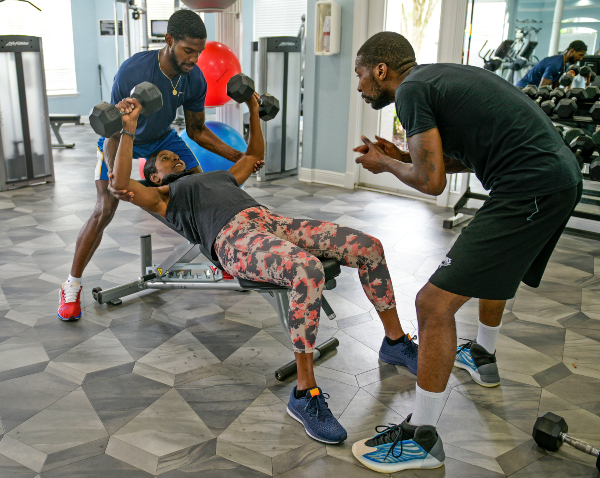
I was offered the opportunity to take part in Warrior Care Network® at the Emory Healthcare Veterans Program – a two-week intensive, individualized care program. At Emory, program specialists provided follow-up care for the next three years. It helped me find new ways to approach my past instead of avoiding it.
It was also through Warrior Care Network that I was able to tell my full story to my sons. Now, they can be there for me, and I can be there for them. During my time at Emory, my son passed up an opportunity to play basketball internationally to be with me. There was no greater proof of love at that moment, and I deeply appreciated the sacrifice he made for me.
I’m not ashamed of what happened to me anymore. I have worked through many things, and I have a lot to be proud of.
I now feel empowered to share my story. After going through my recovery, I eventually accepted a job with Wounded Warrior Project on the Warriors Speak team. In this position, I’m able to tell groups of veterans and supporters about my experiences and how the right support has helped me heal. I want to use my journey to help show other veterans, especially female veterans, that healing is possible after their time in service.
Thanks to the help I received from Wounded Warrior Project, I’m thriving today. I’m taking care of myself – mind and body.
My message now is daily self-care, acceptance, love, and wholeness. I see now how my tough childhood gave me the fortitude to never quit. And although I got tired of the struggle, I found the strength to ask for help. Because of my VA physicians, WWP Talk specialist, Project Odyssey peers, and my Warrior Care Network experience at Emory Healthcare, I’m able to share my story with others and say, “There is a better life.”
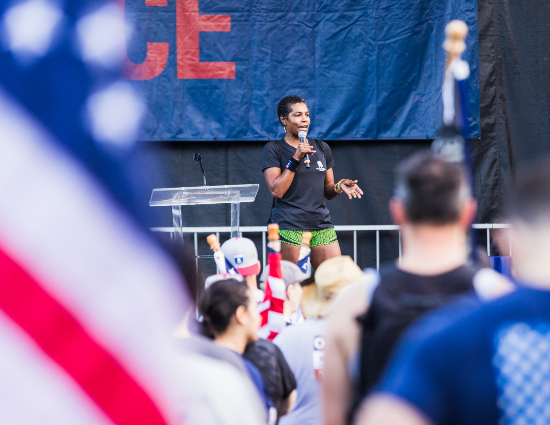
A Life Beyond PTSD
I have a wonderful life now. I use the tools and resources WWP gave me to continuously improve my physical and mental health. I know mental health is a day-to-day fight, and I’m going to continue to fight for my own mental well-being and that of others.
Now I’m in a position where I can help carry others. Now I can say, “I will carry you on my shoulders until you’re able to stand on your own two feet.”
To be able to do that, I have to continue to care for myself physically and mentally so that I can continue to live a positive life where I get to advocate for other veterans.
I don’t think I would change much about my life even though I had some terrible things happen to me. Yes, it was a burden, and I still have my days, but I know I have people I can count on. I’m going to go out there and tell my story because telling my story helps me, too.
Learn more about Warriors Speak® and about how veterans are helping Combat Stigma associated with PTSD.
About Wounded Warrior Project
Since 2003, Wounded Warrior Project® (WWP) has been meeting the growing needs of warriors, their families, and caregivers — helping them achieve their highest ambition. Visit https://newsroom.woundedwarriorproject.org.
